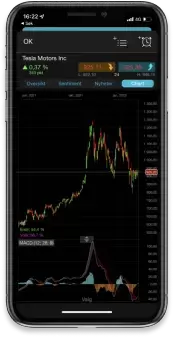European and US equity markets finished lower on Friday as concerns about higher interest rates in the US and political uncertainty in Italy dampened sentiment.
The DAX was the only major European equity benchmark to close higher on Friday, but it just about eked out a small gain, while the FTSE MIB was the biggest faller. The Italian government and the EU are still locked in a debate over Italy’s budget. Giovanni Tria, Italy’s economy minister claimed that sharply reducing the budget deficit would be financial ‘suicide’ – a clear indication that he has no intention of backing down.
The European Commission have given the Italian government until tomorrow to revise their budget deficit plans, and if the Italian government press ahead, and break the rules, the EU might issue fines later this month. Brussels should tread lightly, and as a spike in Italian government bonds could put severe pressure on the Italian banking system, which is likely to hurt the economy. Italy has the third biggest bond market in the world, and should we see another round of the eurozone debt crisis, it would have the potential to be far greater than what we have seen relating to Greece.
At 9am (UK time), Italy will release the industrial production report for September, and on a monthly basis economists are expecting a decrease of 0.7%, and that compares with the 1.7% growth achieved in August. It is worth noting, that last week Italy released poor services and retail sales figures.
Stock markets in Asia trader higher as bargain hunting and firmer oil prices helped sentiment. Alibaba had a stellar Singles Day, and smashed last year’s sales level. The gross merchandise value was $30.8 billion, which easily exceeded the $25.3 billion racked up in 2017. Demand in China is robust, despite the cooling economy.
Towards the end of last week, the Federal Reserve kept interest rates on hold, and said there would be ‘gradual’ rate hikes down the line. The prospect of higher US interest rates was one of the factors that sparked the sell-off in global equities in early October. Traders are pricing in a high probability of a rate hike in December, and there is talk we could see two or three hikes in 2019. Higher borrowing costs are likely to eat into company profits, and could curtail consumers spending habits.
Oil finished firmly in the red last week due to concerns about high supply levels. The US, Russia and Saudi Arabia are some of the largest oil producers in the world, and their production are at or near record levels. WTI lost ground for 10 consecutive sessions – its worst losing streak in 34 years. Brent crude finished lower in nine out of the past 10 days, so the sentiment is clearly weak. The Baker Hughes rig count, showed the number of active rigs in the US has risen by 12 rigs to 886.
Oil ticked higher overnight after Saudi Arabia confirmed that output would be trimmed by 500,000 barrels per day in December. Given the negative news in the energy market lately, speculators swooped in and snapped up oil. Over the weekend, OPEC and non-OPEC members expressed concerns about oversupply in 2019, and announced that production cuts might be needed to stabilise the market.
Theresa May continues to have a tough time over Brexit, as Jo Johnson resigned from the government in protest at the way events are unfolding. The Prime Minister will have a difficult time keeping her own party together, and trying to keep the DUP on side too. The DUP fear Northern Ireland might be treated differently from Great Britain post Brexit, while pro-Brexit Tories are concerned the UK could become stuck in the customs union if an agreement over Irish border can’t be reached.
EUR/USD – has been diving lower since late September and if it holds below the 1.1510/00 region, it could pave the way for the 1.1300 area to be retested. A move to the upside could run into resistance at 1.1578 – the 100-day moving average.
GBP/USD – surged in late October, and if the 1.3000 mark is retaken and held, it could pave the way for 1.3250 to be tested. If the market turns over again, it could target 1.2661.
EUR/GBP – has been pushing lower since August, and if it holds below the 200-day moving average at 0.8837, it might bring 0.8620 into play. A bullish engulfing on the daily chart might drive the market to 0.9000.
USD/JPY – the upward trend that began in March is still intact, and if the positive move continues it might target 114.73. Support might be found at 111.39.
Disclaimer: CMC Markets is an execution-only service provider. The material (whether or not it states any opinions) is for general information purposes only, and does not take into account your personal circumstances or objectives. Nothing in this material is (or should be considered to be) financial, investment or other advice on which reliance should be placed. No opinion given in the material constitutes a recommendation by CMC Markets or the author that any particular investment, security, transaction or investment strategy is suitable for any specific person. The material has not been prepared in accordance with legal requirements designed to promote the independence of investment research. Although we are not specifically prevented from dealing before providing this material, we do not seek to take advantage of the material prior to its dissemination.







